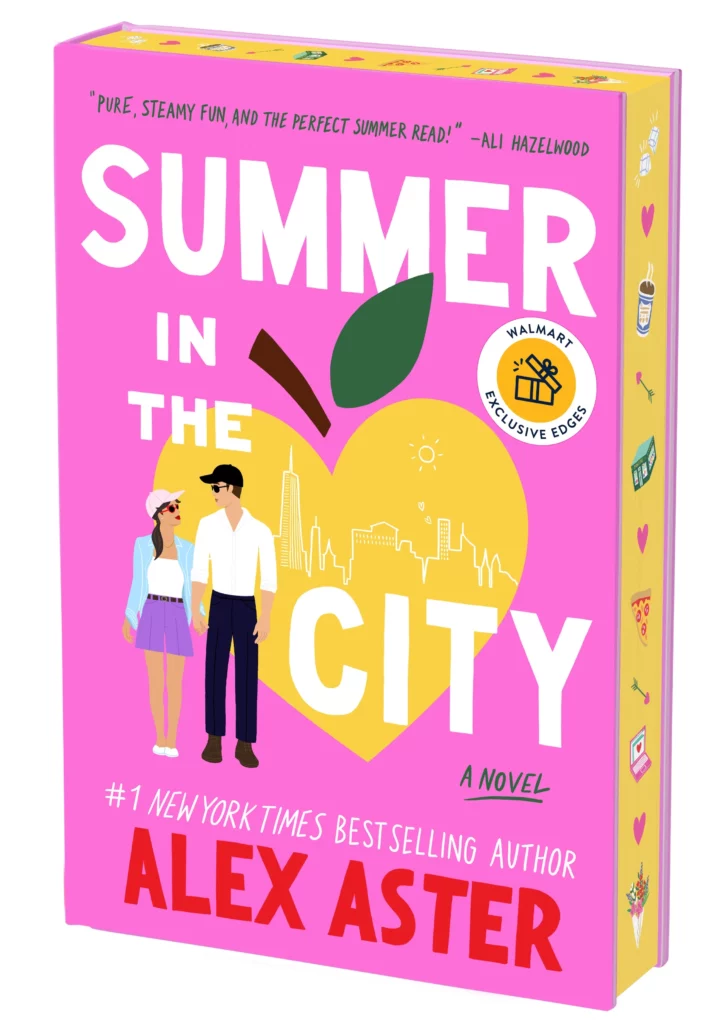A Snap Shot at Instant Bestseller
✨ When the Glitter Settles: What Summer in the City Teaches Us About the Myth of the “Instant Bestseller”

In March 2025, HarperCollins rolled out the kind of launch most authors only dream about. Alex Aster’s Summer in the City arrived with Target and Walmart exclusive editions, sprayed edges, a deluxe hardcover, and marketing muscle strong enough to break the spine of a debut author’s budget. The release date—March 25, 2025—was perfectly timed for spring rom-com season.
It was shiny. It was everywhere. And, at least at first, it worked.
According to Publishers Weekly, Aster’s adult debut debuted at #1 on their Hardcover Fiction list the week of April 7, 2025. The book also hit the New York Times Bestseller list, which Aster celebrated on Instagram as an “instant” success story (Instagram post, April 2025).
But like a summer fling that burns hot and fades fast, the sparkle didn’t last.
The Two-Week Bestseller
Data compiled by Romancing the Data shows Summer in the City appeared on the New York Times Combined Fiction list for just two weeks in April 2025, peaking around the lower half of the Top 10 (Romancing the Data, April 2025 Bestseller Analysis). After that, the title vanished from the charts.
That short run tells us something important: this wasn’t a slow burn or a word-of-mouth phenomenon. It was a front-loaded release—buoyed by hype, preorder incentives, and massive retailer orders that never fully translated into ongoing sell-through.
From Target Tables to Clearance Bins

Now, just six months later, the special editions that once filled endcaps and influencer reels are quietly surfacing on BookOutlet, Amazon Warehouse, and brick-and-mortar clearance racks.
That’s not conjecture—it’s the visible byproduct of a familiar publishing pattern: overprinting. When marketing momentum and social media buzz predict a runaway hit, retailers place big advance orders. If those orders don’t move, the leftovers find their way to discount channels.
Aster’s Summer in the City was positioned to be a crossover blockbuster—an author known for YA fantasy (Lightlark) breaking into adult romance. The publisher treated it like a major frontlist event. But in reality, adult romance is a fiercely saturated market with different reader expectations and a very short attention span for books that don’t deliver on emotional tone or pacing.
On Reddit’s r/RomanceBooks, readers cited “uneven pacing” and “characters that didn’t quite land.” Goodreads reviews hover around a 3.6 average, signaling that while the book wasn’t hated, it also didn’t inspire the evangelical word-of-mouth that sustains a rom-com beyond its debut window.
When Hype Becomes a Liability
The marketing for Summer in the City mirrored the music industry’s “debut single syndrome”—the idea that an artist’s first track must explode immediately or the project fails. Publishing’s version of that is the “instant bestseller.” But instant success often masks unsustainable mechanics: bulk preorders, influencer campaigns with short shelf life, and retailer exclusives that fragment the audience.
There’s also a branding challenge. Aster’s core fanbase came from YA fantasy, a world away from adult romantic comedy. Crossing genres isn’t impossible—Ali Hazelwood, for example, made the leap from STEM rom-coms to paranormal romance with careful pacing—but it does require cultivating reader trust over time. When a shift feels like a pivot designed for market share rather than story passion, readers sense it.
What Authors Can Learn
1. Hype isn’t a business plan.
Social virality sells preorders, not staying power. Longevity comes from rereadability, strong trope execution, and organic buzz from readers who finish your book and tell five friends.
2. Genre loyalty is real.
If you’re crossing categories, bring your audience along intentionally. “YA readers growing up” is a great marketing line—if the tone and stakes grow with them.
So, Was Summer in the City a Flop?
Let’s call it what it is: a soft landing for a loud launch.
It wasn’t a disaster—it hit #1, after all—but it underperformed against the scale of its rollout. For HarperCollins, that’s a shrug. For midlist and indie authors watching from the sidelines, it’s a cautionary tale.
Big marketing doesn’t equal lasting impact. Readers decide that part. And when the glitter settles, what remains on the shelf (or in the clearance bin) is the book itself.
Sources:


